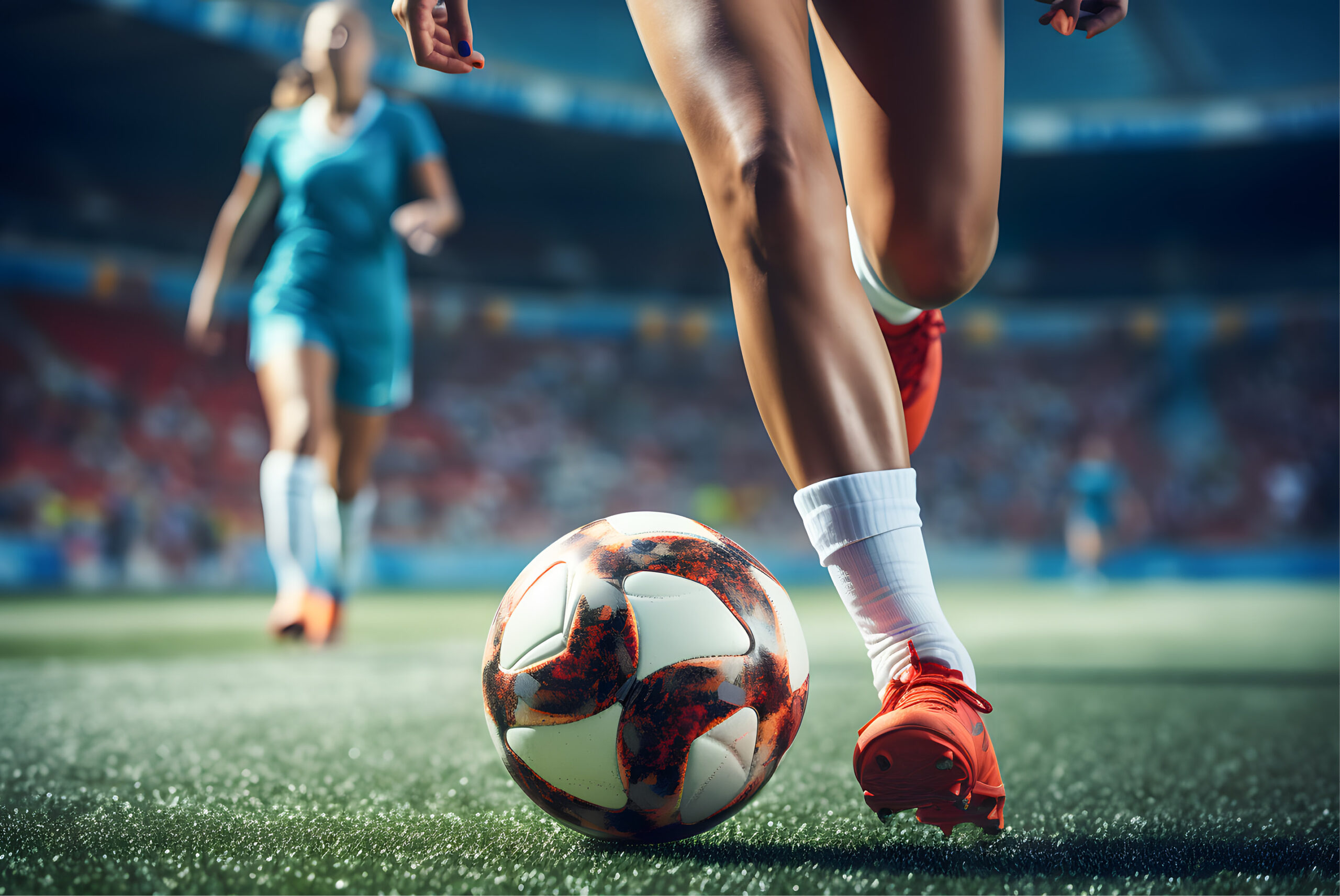
The 2023 Women’s World Cup is saturated with some of the most talented female football (soccer) players we’ve ever seen. But this edition will be without five of the world’s top 16 ranked players as those athletes are still recovering from ACL injury and surgery. Injuries to the anterior cruciate ligament (ACL) are completely devastating and can take anywhere from 6-18 months to completely return to competitive play. But while no athlete wants to hear those three dreaded letters when talking about a knee injury, it’s no secret that it’s the women that are more commonly affected by this ailment.
In this blog, we talk about what the ACL does and why it’s important, why these injuries happen so frequently in female athletes, and how ANY athlete can work to prevent them.
What in the ACL?!
The anterior cruciate ligament (or ACL) is one of the four major static stabilizing ligaments of the knee. The ACL, in particular, helps control the motion of the tibia (shin bone) from sliding forward on the femur (thigh bone). This ligament really is the key to keeping a knee stable while making movements such as pivoting and cutting.
Pop Heard Round the World (Cup)
So how do these injuries occur? Some ACL injuries occur through a contact mechanism–like a player slide tackling another player in the knee. That places a lot of stress on the joint and leaves a player vulnerable to potentially injuring the ACL via an external force. Despite the more traumatic look of a contact mechanism, most ACL injuries occur as a non-contact injury. This happens when an athlete makes a forceful cutting movement or lands at an awkward angle. This also puts a lot of stress on the joint, allowing for a potential injury to the ACL. Athletes will generally report a “popping” sensation in the knee when the ACL is ruptured. While the “pop” is one of the universal signs of an ACL injury, it is not always present. When the ligament is disrupted, it is extremely challenging (some may say impossible) to return back to a high level of competition comparable to a player’s prior level. Professional athletes generally need to undergo surgical intervention, followed by 6-12 months of intense physical therapy and sport-specific rehabilitation.
Who Runs the World?
Girls. But unfortunately, while females are busy running the world, they are also 2-8 times more likely to injure their ACL compared to their male counterparts. Why, you may ask? Studies outline a number of risk factors, but nearly every study has cited the female anatomy as a major factor in increasing our risk for incurring this disabling injury. Women have innately wider hips, putting the knee in stressed positions when bending or landing. Add that to the fact that women’s sports are faster and more competitive than we’ve ever seen, that stress on the knee joint is only increased. So what can we do to prevent this type of injury?
Prevention Strategies
- Practice GOOD landing mechanics. When doing functional exercises like squats or even plyometric exercises like box jumps, it is imperative to take note of your knees and how they track. Landing with a deeper bend in the knees, focusing on externally rotating the hips (pushing the knees away from one another), and keeping the knees over the toes, can help to reduce your risk of ACL injury.
. - Get those hammies and glutes working. The muscles that comprise the posterior musculature of the lower extremity also play a huge role in stabilizing the knee joint and helping to protect the ACL. By strengthening the hamstrings and glutes, you are strengthening your dynamic stability at the knee. Those dynamic stabilizers (hamstrings and glutes) help to support the static stabilizers (ACL).
. - Hydrate and eat well. This one may seem like a no brainer, but a healthy diet is so important not only to recovery, but to injury prevention, as well. When we are well-nourished and hydrated, our brain and neuromuscular system function better. Remembering good landing and running habits requires our neuromuscular system to be in tip-top shape, too.
Athletes, especially at the elite level, must undergo extensive rehabilitation in order to return to peak form, and some may never fully come back from an ACL tear. And while this type of injury is fairly common in the athletic community, there are some preventative strategies that can help. An Excel Physical Therapist can work with individuals to screen for potential movement deficiencies that may increase your risk of ACL injury, and can work with you to address those concerns.
Learn more about our preventative services here.
**The medical information contained herein is provided as an information resource only, and does not substitute professional medical advice or consultation with healthcare professionals. This information is not intended to be patient education, does not create any patient-provider relationship, and should not be used as a substitute for professional diagnosis, treatment or medical advice. Please consult with your healthcare provider before making any healthcare decisions or for guidance about a specific medical condition. If you think you have a medical emergency, call your doctor or 911 immediately. IvyRehab Network, Inc. disclaims any and all responsibility, and shall have no liability, for any damages, loss, injury or liability whatsoever suffered as a result of your reliance on the information contained herein.
